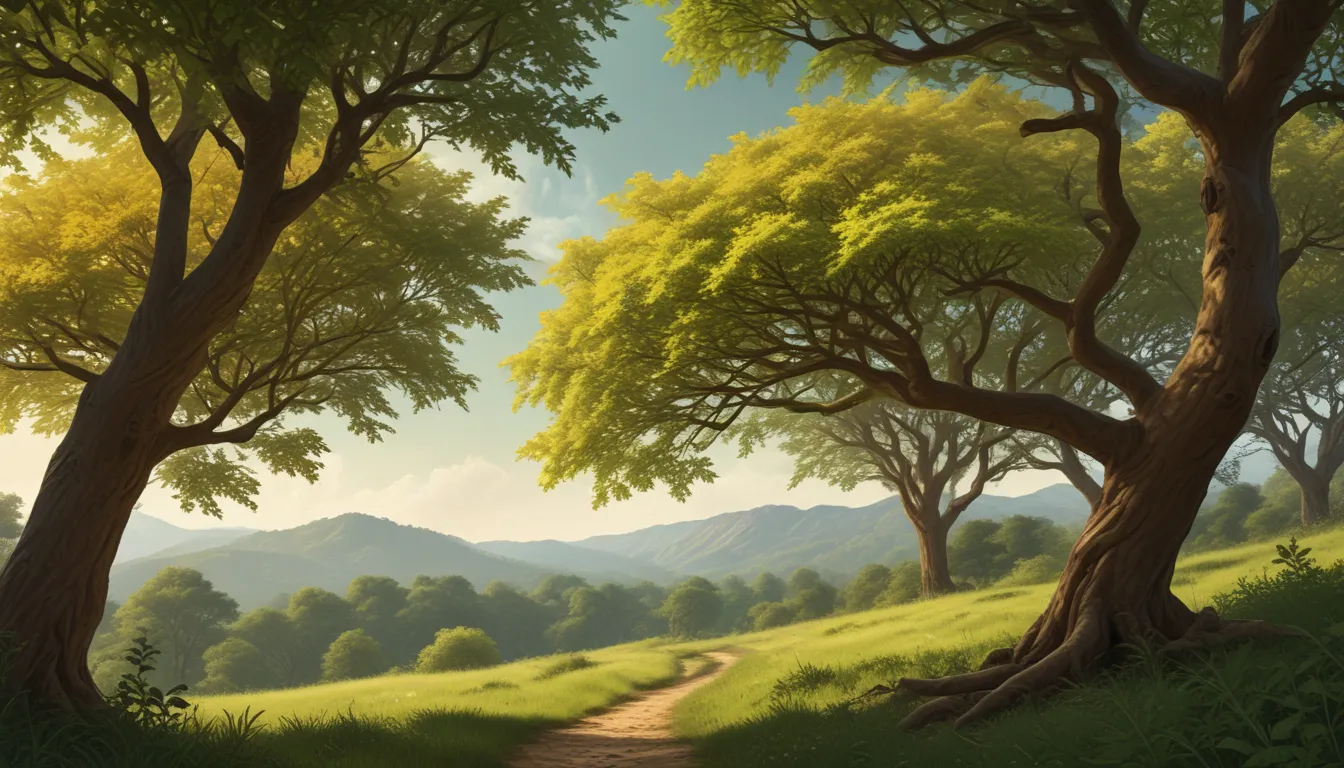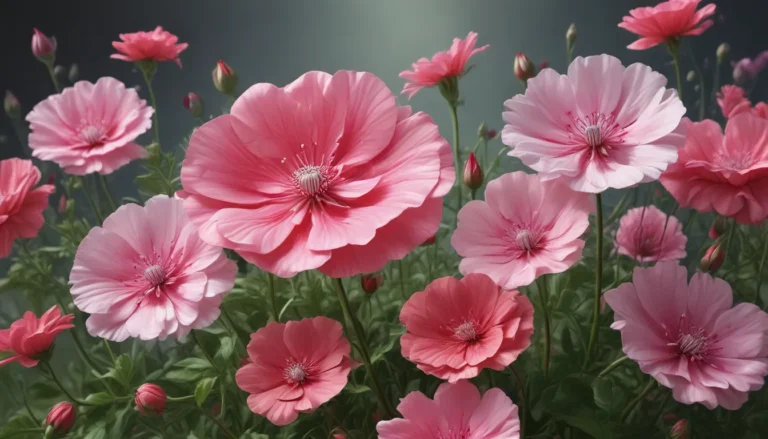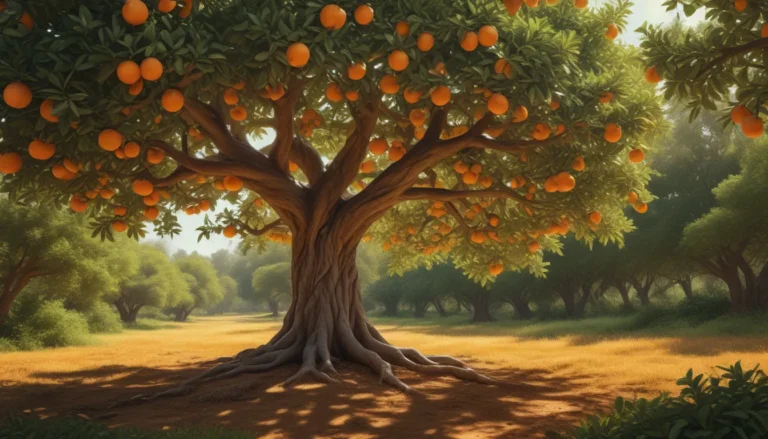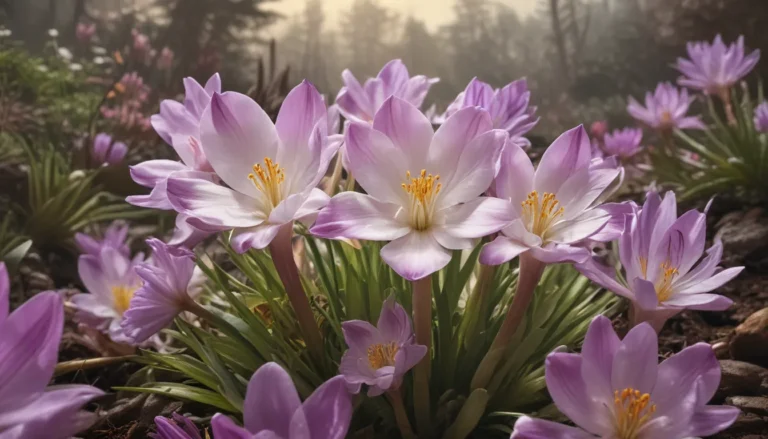The pictures we use in our articles might not show exactly what the words say. We choose these pictures to make you interested in reading more. The pictures work together with the words but don’t take their place. The words still tell you the important facts.
Are you ready to embark on a journey through the mesmerizing world of Fraxinus? Known for their exceptional beauty and remarkable characteristics, ash trees, belonging to the Fraxinus genus, captivate with their diverse species and ecological importance. Whether you are a nature enthusiast, an arborist, or simply curious about the natural world, there is something intriguing about these incredible trees that will leave you in awe of their wonders. Join us as we explore 19 captivating facts about Fraxinus that showcase the diverse characteristics and cultural significance of these remarkable tree species.
Unveiling the World of Fraxinus
The Oleaceae Family Connection
Fraxinus, a genus of flowering plants, belongs to the Oleaceae family, which also includes olive and lilac trees. These trees, primarily found in the Northern Hemisphere, play a vital role in the ecosystem.
The Identity of Ash Trees
Commonly known as ash trees, the Fraxinus genus derives its name from the Latin word for "ash tree." Known for their tall stature, distinctive bark, and compound leaves, ash trees stand out in the natural landscape.
The Diversity of Fraxinus
With over 65 different species, the Fraxinus genus offers a variety of ash trees, each varying in size, leaf shape, and habitat preferences. From the White Ash to the European Ash, these trees showcase ornamental features and ecological importance.
Essence of Fraxinus: Timber and Foliage
Valuable Timber Resource
The wood derived from ash trees is highly prized for its strength and versatility. Used in furniture, flooring, sports equipment, and musical instruments like guitars, ash wood is a valuable resource in various industries.
Deciduous vs. Evergreen
While most ash tree species are deciduous, shedding their leaves in the fall, some species in warmer climates exhibit evergreen features. This diversity adds to the allure of the Fraxinus genus.
Winged Seeds of Fraxinus
Fraxinus trees produce unique winged seeds known as samaras or "ash keys." These seeds have a characteristic shape that aids in wind dispersal, contributing to the tree's reproductive cycle.
Ecological Significance and Threats
Vital Ecological Role
Ash trees serve as essential habitat and food sources for wildlife, including birds, insects, and mammals. They contribute to forest biodiversity and play a crucial role in maintaining ecosystem balance.
Battle Against Ash Dieback
Ash Dieback, caused by the fungal pathogen Hymenoscyphus fraxineus, poses a severe threat to ash tree populations worldwide. The disease leads to the decline and death of infected trees, emphasizing the need for conservation efforts.
Emerald Ash Borer Infestation
The emerald ash borer, an invasive insect species, poses a significant threat to ash trees in North America. These beetles disrupt the tree's nutrient transport system by feeding on the inner bark, causing widespread damage.
Cultural Significance and Utilization of Ash Trees
Traditional Medicine Remedies
The bark and leaves of ash trees have been used in traditional medicine to treat ailments such as fever, arthritis, and digestive disorders. While medicinal uses exist, consultation with healthcare professionals is recommended.
Cricket Bats and Handcrafted Tools
Ash wood is a popular choice for making cricket bats due to its strength and flexibility. Additionally, its durability and strength make it ideal for crafting hand tools like hammers and agricultural implements.
Folklore and Mythology
Ash trees hold cultural significance in folklore and mythology across various cultures. In Norse mythology, the world tree Yggdrasil is often associated with ash trees, highlighting their mystical importance.
Landscape Appeal and Urban Adaptability
Ornamental Value in Landscaping
The Fraxinus genus is valued in landscaping for its ornamental features. With tall, graceful forms and attractive foliage, ash trees enhance the visual appeal of gardens, parks, and residential areas.
Tolerance to Urban Environments
Certain species of ash trees exhibit tolerance to urban pollution, making them suitable for planting in urban settings. Their adaptability to challenging conditions makes them a popular choice for urban landscaping projects.
Historical and Cultural Significance
Ash trees have played significant roles in historical events and folklore, symbolizing strength, resilience, and spiritual symbolism across different cultures. Their enduring presence in art and literature reflects their cultural significance.
Exploring the Ash Tree Species
Pumpkin Ash: Thriving in Swamps
Pumpkin ash, a species within the Fraxinus genus, thrives in swampy habitats, showcasing unique adaptations to waterlogged environments.
Blue Ash: Square Twigs and Corky Bark
Blue ash stands out with its square twigs and corky bark, adding to its distinctive appearance in the natural landscape.
Arizona Ash: Drought-Tolerant Shade Provider
Native to the southwestern United States, Arizona ash is prized for its ability to tolerate drought conditions while offering valuable shade.
Embracing the World of Ash Trees
Fraxinus, commonly known as ash trees, embody a rich history and numerous notable characteristics that continue to captivate botanists, arborists, and nature enthusiasts alike. Whether you appreciate their ecological significance, cultural symbolism, or simply admire their beauty, exploring the intriguing facts about Fraxinus offers a deeper understanding and appreciation for these magnificent tree species.
Next time you encounter an ash tree, take a moment to appreciate its unique features and remember the fascinating qualities that make Fraxinus such a vital part of our natural world. Embrace the wonders of ash trees and their enduring presence in the ecosystem and human consciousness.
FAQs
Q: How many species of Fraxinus are there?
A: There are approximately 65 to 70 known species of Fraxinus.
Q: Are all Fraxinus trees deciduous?
A: Yes, all species of Fraxinus trees are deciduous, shedding their leaves annually.
Q: What is the most common use of Fraxinus wood?
A: Fraxinus wood is commonly used for making furniture, flooring, and cabinets due to its strength and attractive grain patterns.
Q: Are there any medicinal uses for Fraxinus?
A: Yes, various parts of the Fraxinus tree have been used in traditional medicine to treat ailments such as arthritis, fever, and digestive issues.
Q: Are Fraxinus trees affected by any specific diseases?
A: Yes, Fraxinus trees are susceptible to diseases such as ash dieback and emerald ash borer infestations, which can have devastating effects on their health.
Q: Can I grow a Fraxinus tree in my garden?
A: It depends on the species and your specific climate conditions. Some species of Fraxinus can be grown in gardens, but it is important to choose the right variety and provide suitable growing conditions.
As you delve into the captivating world of Fraxinus, you'll uncover the intricate beauty and ecological significance of these remarkable trees. From their diverse species to their rich cultural history, ash trees continue to inspire awe and appreciation in the hearts of nature lovers worldwide. Join us in celebrating the wonders of Fraxinus and the invaluable role they play in our natural world.






